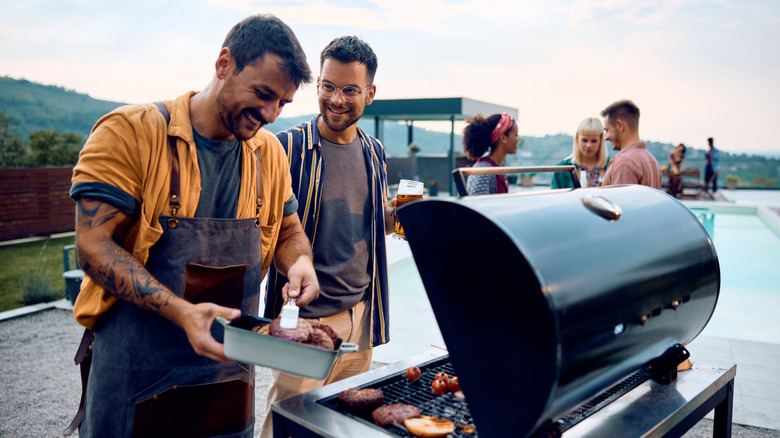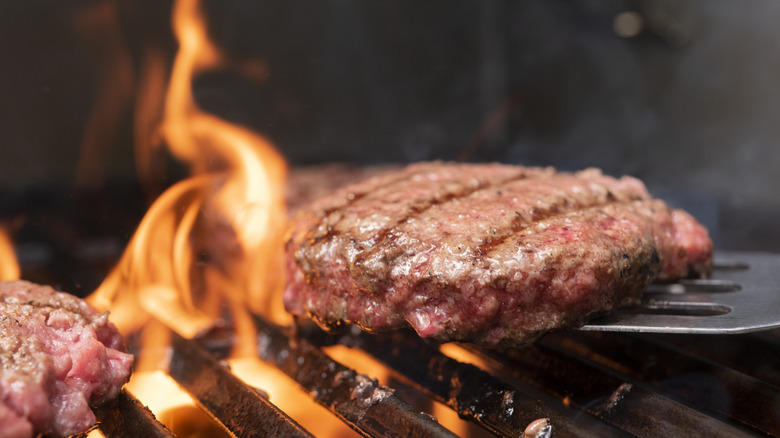The Simple Trick That Makes Burger Patties Cook Faster On The Grill
For every grill master who finds zen flipping patties, there's another who can't shake the stress — and nothing amps up the stress like cooking for a hungry crowd. What should you do when every stomach at the barbecue starts rumbling at once? The Takeout spoke to star chef Robbie Shoults to see how he keeps burgers coming. Shoults is the third-generation owner of Bear Creek Smokehouse, an 80-year-old family heirloom. More recently, he's added High Horse 1898 to his restaurant collection, served as a guest judge on Food Network's "Beat Bobby Flay," and showed off his brisket skills on "Huckabee's Jukebox."
Shoults's trick is a little unconventional. "Poking a hole in the middle of a thick hamburger patty can help it to cook faster and more evenly," he told The Takeout. "The hole allows steam to escape and increases the surface area exposed to heat."
The trick has other benefits, too. "When steam escapes through the hole, it will help prevent the hamburger patties from bulging in the middle and may also help prevent the edges from overcooking," Shoults explains. Don't worry, your friends aren't going to mistake the patties for wannabe bagels and smear them with cream cheese. "As the meat is grilled, the heat will cause it to shrink and contract, which can possibly close the hole," he says.
More tips for grilling patties in a hurry
According to Shoults, starting slow helps you finish fast. "Make sure your grill is preheated and up to temperature before placing your burger patties on," he says. "A hot grill will make for a faster sear and cooking process."
Don't want to poke a hole in your patties? Compromise with Bobby Flay's technique for flat, well-formed burgers and poke a small dimple in the meat instead of punching a hole all the way through. You can simply use thinner patties, too. "Thinner hamburger patties... will cook way faster than a thicker one," Shoults says. If you do opt for flatter patties, avoid the hole altogether. You could easily end up overcooking the meat.
Speed and efficiency isn't everything. Don't get too impatient: The inside of the burger should reach at least 160 degrees Fahrenheit before you take it off the grill. Even if you know your friends and family like their burgers medium-rare, err on the side of caution. Undercooked ground beef is riskier than undercooked steak, since the extra surface area gives bacteria plenty of room to grow.

